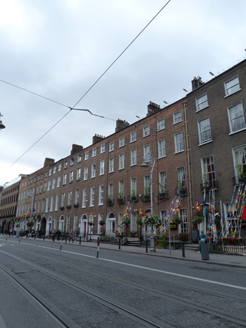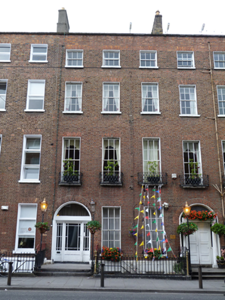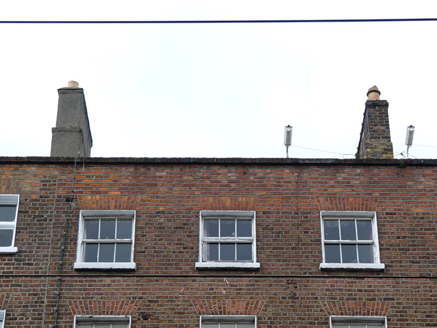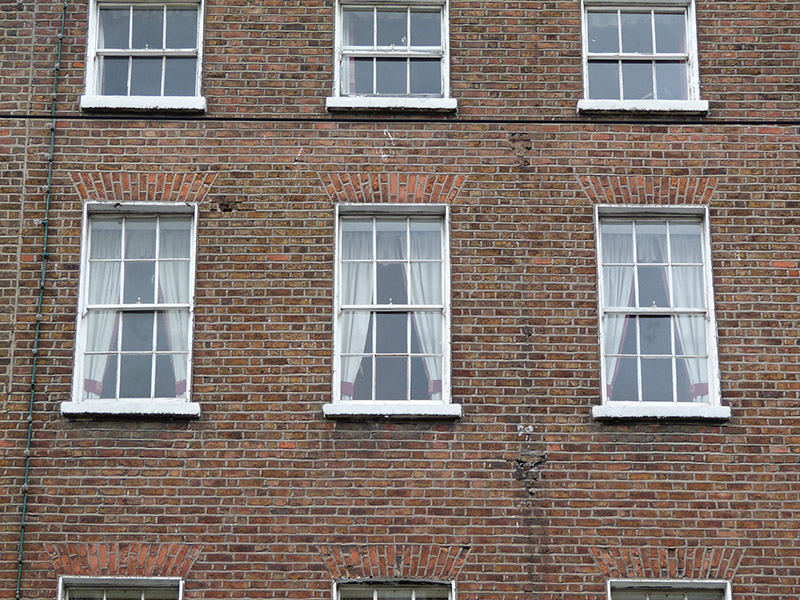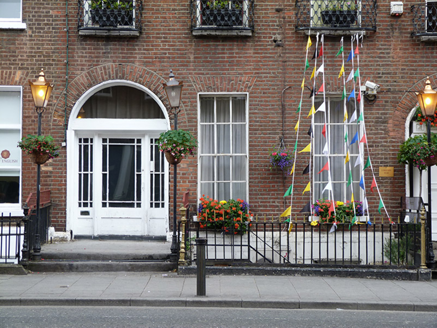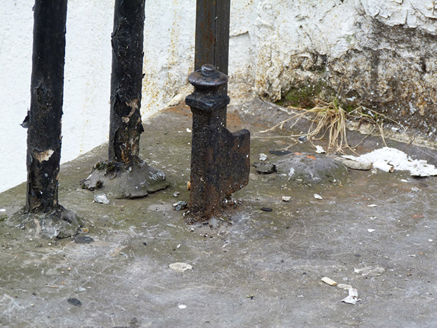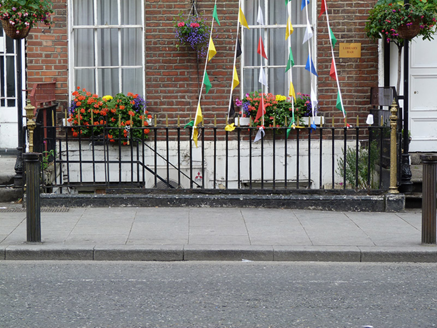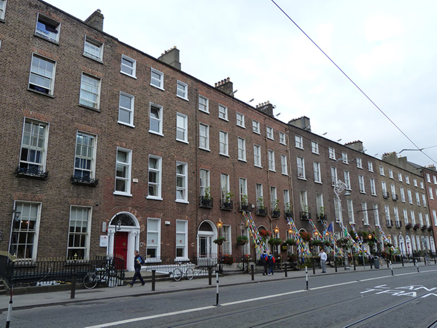Survey Data
Reg No
50920222
Rating
Regional
Categories of Special Interest
Architectural, Social
Original Use
House
In Use As
Hotel
Date
1810 - 1830
Coordinates
315722, 233098
Date Recorded
04/09/2015
Date Updated
--/--/--
Description
Terraced three-bay four-storey over basement former house, built c. 1820, now in use as hotel. M-profile pitched roof, hidden behind refaced brick parapet with granite coping, brick chimneystacks with yellow clay pots to north party wall and rendered chimneystacks to south party wall. Red brick walls laid in Flemish bond over rendered walls to basement. Square-headed window openings with brick voussoirs, patent reveals and masonry sills with latticed mild-steel balconettes to first floor. Six-over-six timber sliding sash windows with horns, three-over-three to third floor. Round-headed door opening with brick voussoirs, rendered reveals and plain timber pilasters supporting timber frieze, flanked by replacement sidelights and plain glass fanlight over replacement half-glazed timber panelled door with margin-lights. Rendered entrance platform with partial cast-iron boot scraper, platform flanked by mild-steel railings. Cast-iron railings with decorative corner posts on granite plinth enclosing basement well to north. Street-fronted, located on west side of Harcourt Street.
Appraisal
Though internally altered for use as a hotel, this building forms part of a relatively intact street of late-Georgian and early-Victorian townhouses. Built as a unified terrace comprising Nos. 24-31 (50920221-8), the group is characterised by the unusually narrow bays of the principal facades. Despite the replacement of the original door and classically-styled doorcase, the building positively contributes to the wider streetscape, which retains uniform rooflines, vertical massing and restrained detailing. Harcourt Street was opened 1777 by John Hatch, barrister and Seneschal of the Manor of St. Sepulchre. Development was sporadic until the late 1790s when Messrs Hatch, Wade and Whitten obtained approval from the Wide Street Commissioners for the further development of the street.
